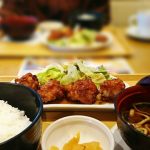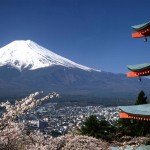Food you should try in Japan – Part 1
Japanese food is one of the many attractions of visiting Japan. It is deeply linked with Japanese culture, showcasing the exquisite inherited traditions passed down through generations over more than a thousand years. There are literally hundreds of unique Japanese foods from snacks, street food and Izakaya (Japanese pub) meals to super fresh seafood, Kaiseki cuisine and traditional meals.
Both sushi and okonomiyaki are synonymous with Japanese cuisine so I presume you might have already put them on your list to eat. They are the hallmark of Japanese foods, however, if you have not listed them yet, let’s put it on your list now!
Sushi – There are two kinds of sushi. One is Nigiri-zushi, which Japanese people (and most other people) call “sushi”. It is made from cooked rice which has been chilled and flavoured with vinegar. It is then shaped into bite-sized pieces and topped with a selection of raw fish.
The other of type of sushi is called Maki-sushi, or “nori-maki” (you might know it as a “nori-roll”). It is made from rice, formed into a roll with fish, egg or vegetables and wrapped in seaweed.
There is an extensive variety of fresh sushi toppings (called “neta” – pieces of raw fish on a small vinegared rice ball) which are always available throughout Japan, especially in coastal towns. Sushi shops or restaurants within close proximity to a fish market would be an ideal place to have fine sushi.
Okonomiyaki –The “Japanese pancake” is a savoury dish made from a mixture of flour, chopped cabbage, spring onion and a few other ingredients.
When the batter is mixed together it is grilled on the teppan (hotplate). Thinly sliced pork belly or seafood (or anything else that you like) is put on the top. The okonomiyaki is then flipped over for the other side to cook. Once both sides are cooked, is topped with an okonomiyaki sauce (which is similar to barbecue sauce), mayonnaise, dried grated seaweed and dried bonito flakes for seasoning.
There are two types of authentic Okonomiyaki in Japan. One is from Osaka and the other is from Hiroshima. If you have plans to visit either of these places, you must try the local okonomiyaki!
(Or why don’t you join a cooking class where locals will teach you how to make Okonomiyaki! – Best Okonimiyaki Cooking Classes in Osaka)
Here are 10 classic types of food you should try in Japan.
1. Ramen (ラーメン)
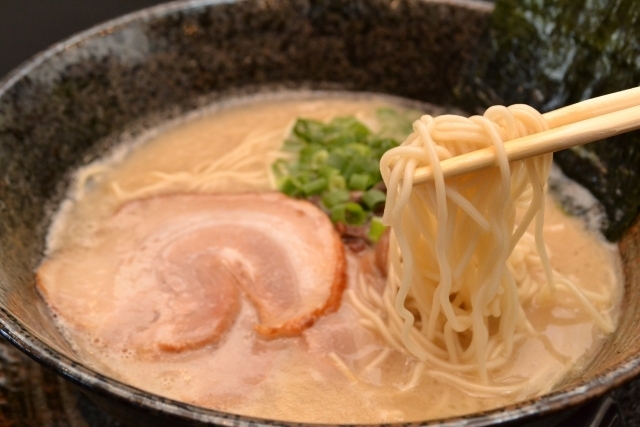
Ramen is a common noodle soup dish. Many Japanese people enjoy having ramen as a late night meal or snack following a night out drinking. It’s quite a filling dish and could be a considered a main meal rather than a snack. Ramen will fall into four categories depending on the flavour of the broth – shoyu (soy sauce), miso, shio (salt) and tonkotsu (pork bone). Some cities produce a local speciality which you should try if you are in the area. Hokkaido is known for its miso ramen, Fukuoka is famous for its rich tonkotsu ramen and Kitakata ramen is a dainty traditional shoyu ramen (Kitakata is a city of Fukushima prefecture).
2. Yakiniku (焼き肉)
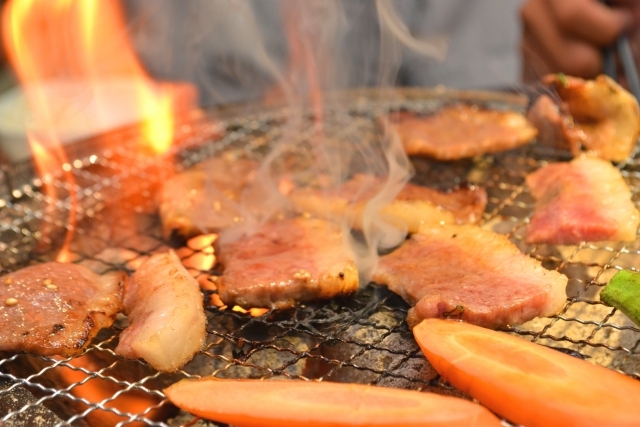
Yakiniku is a Japanese style BBQ, and literally translates to “grilled meat”. Sliced or bite-sized chunks of meat and vegetables are cooked on a gridiron over a ‘sumibi’ (charcoal) flame or a gas grill fire. The handy BBQ on your table is a feature at most Yakiniku restaurants. You can cook your food as you like and at your own pace while enjoying a crisp Japanese beer!
3. Tempura (天ぷら)
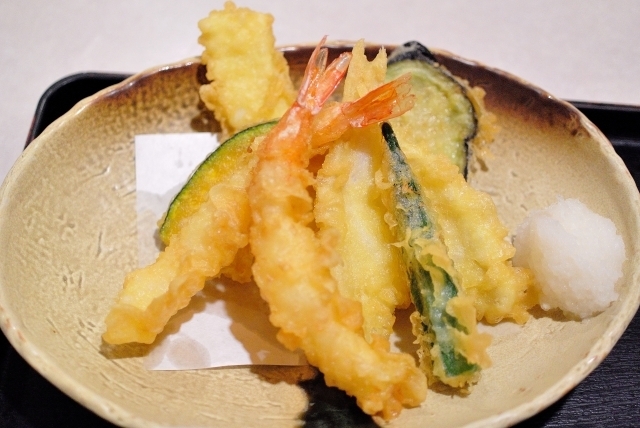
Tempura is lightly battered and deep fried seafood and vegetables. It is usually served with a tentsuyu (very light dashi sauce). In order to enjoy the sophisticated taste of the ingredients, it is also very common to substitute the tentsuyu dipping sauce with salt. Tempura is fluffy inside and crispy outside and will tantalise your tastebuds.
4. Kaiseki Ryori (会席料理)
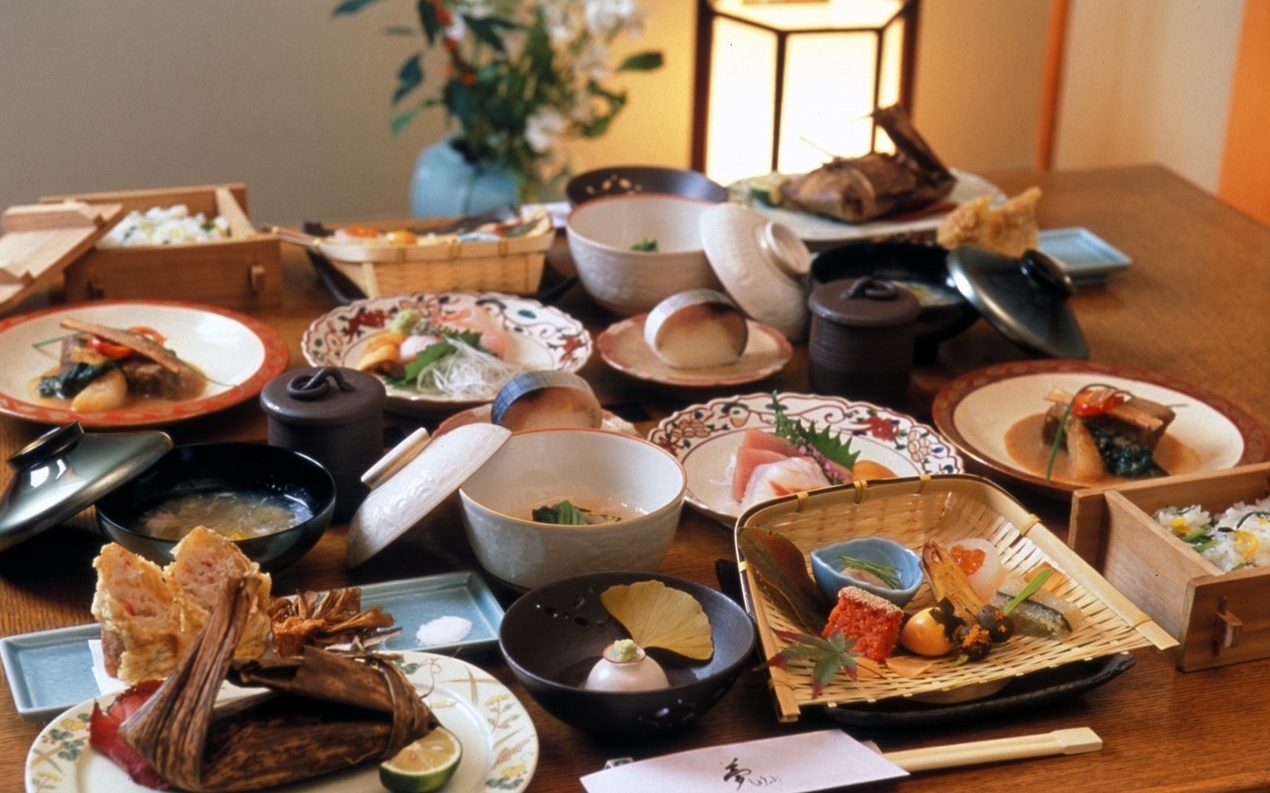
Kaiseki Ryori is a traditional Japanese multi-course cuisine. It is a set menu and the seasonal ingredients are selected by a chef and presented on beautiful individual plates and bowls. Kaiseki ryori is a culinary art form involving the meticulous presentation of traditional Japanese cuisine. You can have Kaiseki Ryori at an Onsen Ryokan (traditional Japanese inn), at a hotel or a Ryotei (Japanese cuisine restaurant).
5. Yakitori (焼き鳥)
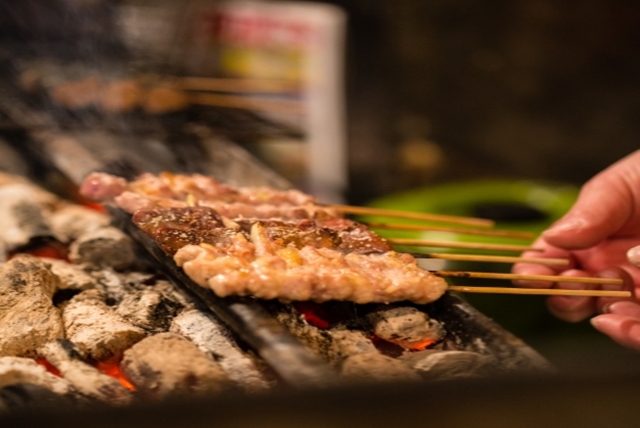
Skewered chicken, grilled over a charcoal fire, is the perfect dish to have with a refreshing Japanese beer! Bite-sized pieces of all parts of the chicken are served along with other skewers such as asparagus wrapped in bacon, garlic, green capsicum and more. Generally, you can choose between shio (salt) or tare (similar to teriyaki sauce) to season your yakitori. If desired, sprinkle on some shichimi or ichimi (chill flake spice).
6. Tonkatsu (とんかつ)
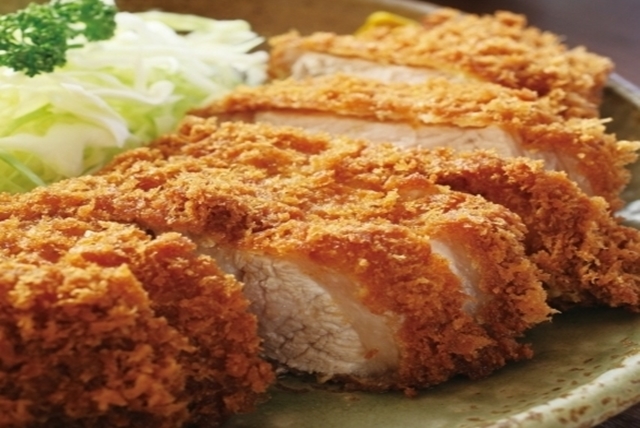
Tonkatsu is a deep fried, crumbed pork fillet or loin cutlet typically served with shredded cabbage and mustard as a spice. Its golden, crunchy exterior and delicious succulent interior will stimulate your appetite. Put tonkatsu sauce (which tastes like a cross between barbeque sauce and Worcestershire sauce) over the top and dig in. If you like, add a little bit of the mustard to spice up the flavour.
7. Nabe Ryori (鍋料理)
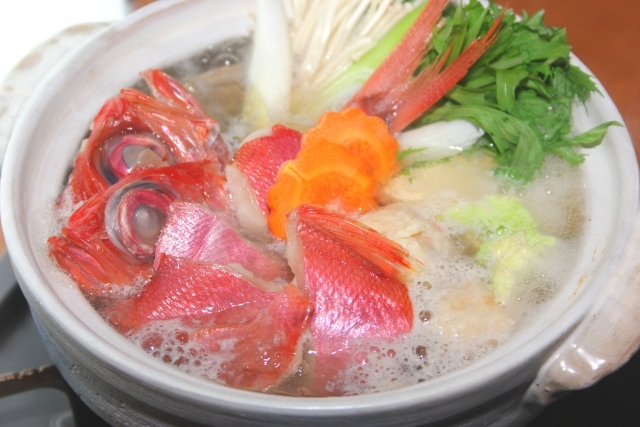
Japanese people simply call this dish “nabe”. There is a wide variety of this Japanese hot pot dish, and it is a typical hearty winter food. Commonly, it is cooked on the dining table using a portable stove. Nabe Ryori is stewed meat, vegetables (wombok, spring onion, carrots, radish and mushroom are very common), tofu and vermicelli or shirataki noodle with broth. Yosenabe, Chankonabe, Motsunabe, Yudofu, Sukiyaki and Oden are also categorised as Nabe Ryori.
8. Kara-age (から揚げ)
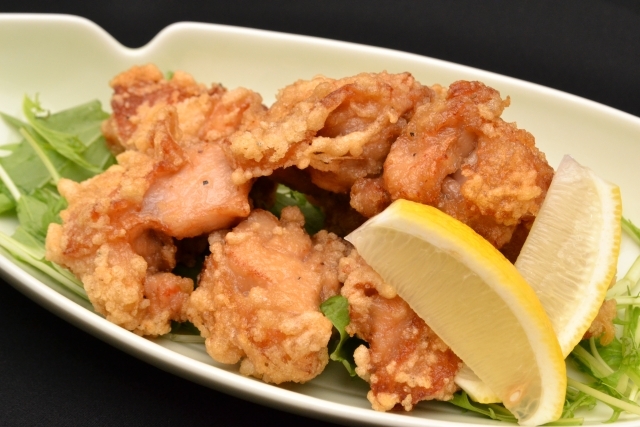
Kara-age is Japanese fried chicken, one of the most popular Japanese foods among both Japanese people and foreign tourists. Bite-sized chicken is marinaded in soy sauce with minced garlic and ginger, then covered with flour and deep fried. It is a very simple dish, but you will get hooked on Kara-age! It is one of the most loved dishes at an Izakaya (Japanese pub), eatery, and at home. Also it’s a good savoury snack when you are peckish. You can get it from the hot food section of a “Konbini” (convenience store) too.
9. Shabu-shabu (しゃぶしゃぶ)
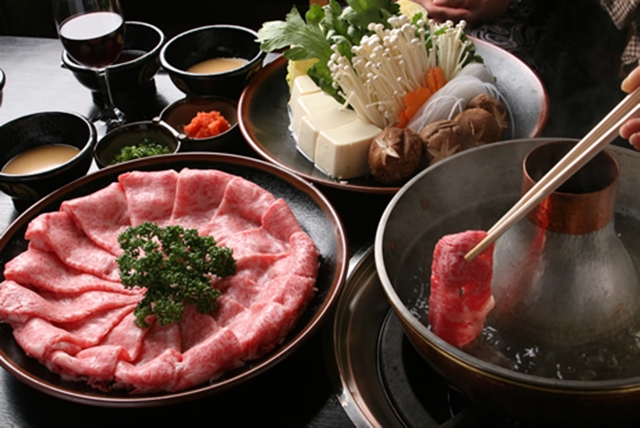
Shabu-shabu is one of the nabe, hot pot dishes. Thinly sliced meat (usually pork or beef) and vegetables are boiled and cooked in konbu dashi broth and served with dipping sauces – “pon-zu” (fresh citrus juice combined with soy sauce) and “goma-dare” (rich creamy sesame sauce) are popular and common. “Shabu-shabu” is an onomatopoeia which describes like “swish swish” when the meat cook in the broth. Using chopsticks, pick up the meat and “swish” it a few times in the broth (this is the way shabu-shabu cooked!), then dip it into a sauce and eat!
10. Curry Rice (カレーライス)
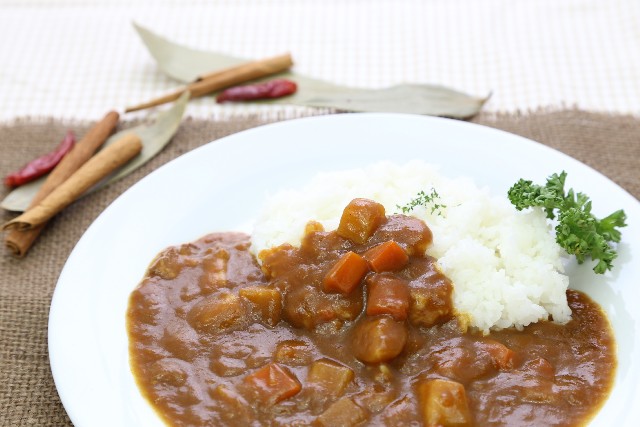
Curry rice is a common and popular Japanese style curry. It was influenced by British curried rice (originally based on Indian cuisine) and is a typical Western cuisine converted to a much-loved Japanese dish. Japanese curry is not spicy, however the rich flavour will captivate you and leave you wanting more.
Sidenote ~Challenging food~
Chawan-mushi (茶碗蒸し)
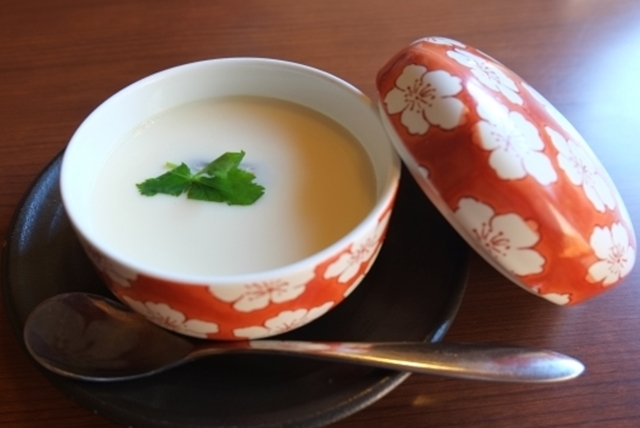
Umeboshi (梅干し)
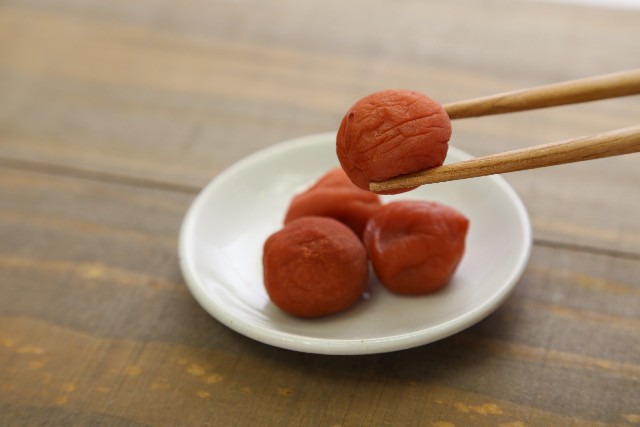
Natto (納豆)
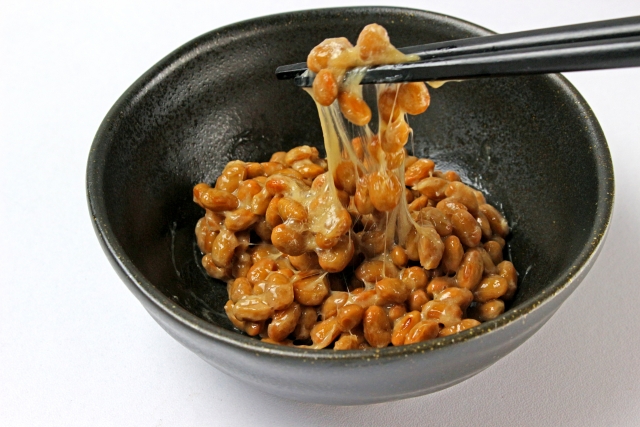
Chawan-mushi (茶碗蒸し) – is translated literary as “steamed in a bowl”. It is a savoury steamed egg dish and looks like custard. The cooking process between the two is alike in a lot of ways, but chawan-mushi does not contain milk or sugar, so it is totally different to custard. Chawan-mushi is seasoned with dashi (fish stock or konbu sea weed), mirin and soy sauce. Its texture is quite unique – soft and silky smooth like tofu or mousse, only smoother. Usually it is topped with shiitake mushroom and mitsuba (a type of Japanese herb) with ginkgo and a small piece of chicken on the bottom. Chawan-mushi is frequently served as a side dish of Kaiseki cuisine.
Umeboshi (梅干し) – is pickled Japanese Ume plum and is surprisingly super sour and salty. Umeboshi is a kind of a ‘tsukemono’ pickle and is commonly served as a side dish for rice (at breakfast and lunch) and is also used as a filling for onigiri (rice ball). Traditional Japanese umeboshi is known as, and believed to be, a healing agent. It can be used as a digestive aid, for the prevention of nausea and to help preserve food. It is also a well-known hangover cure. Good medicine tastes sour!
Natto (納豆) – I have not yet met a non-Japanese person who likes natto! Natto is a traditional Japanese dish of fermented soybeans. The peculiar flavour coupled with an extremely intense smell and sticky and slimy texture, puts this near the top of the list of adventure food. Pour soy sauce or tare (natto sauce (it comes with the natto)) onto the natto and mix them very well until it becomes stringy. If desired, add mustard (this also comes with the natto) or spring onion as a relish. Generally, natto is eaten as a side dish alongside rice, especially at breakfast time.
These three foods are very unique and peculiar traditional Japanese dishes. Natto is a particularly polarising food – you either love it or hate it – even for Japanese people. Also, not many foreigners are fans of it. If you don’t hate sour stuff, you might be ok with umeboshi. When you see chawan-mushi, don’t go and assume that it is a sweet or a dessert. Try to convince your brain that “this is a savoury dish” and avoid the confusion between the flavour you expected from its appearance and the actual flavour. You never know, one of these three adventure foods might become one of your favourite Japanese dishes!!!
You will enjoy Japanese foods at restaurants, cafes, bars and izakaya everywhere in Japan (of cause!). Also you could take a local’s cooking class or two. That will give you another way of authentic Japanese food experience! – Find your cooking class in Japan here!
I hope you will be entertained by the stunning Japanese foods and have an unforgettable food experience!




